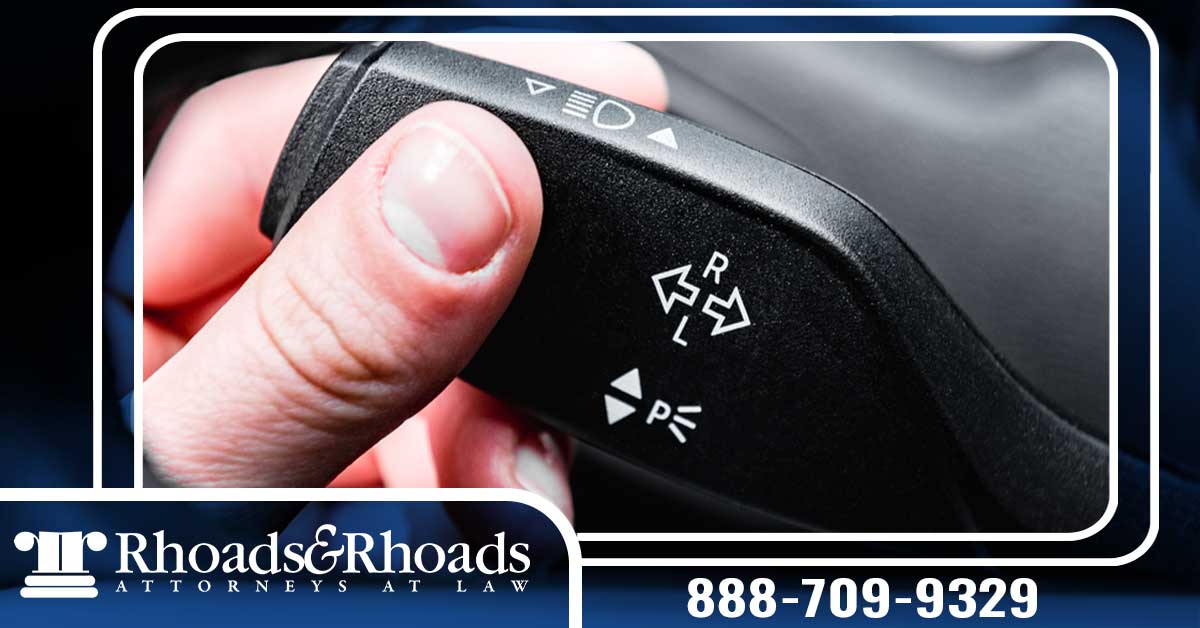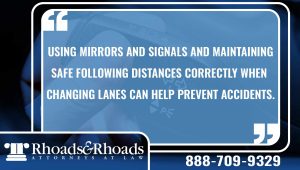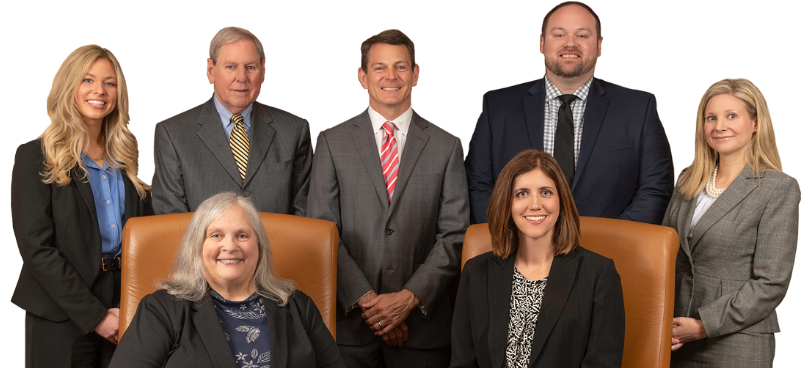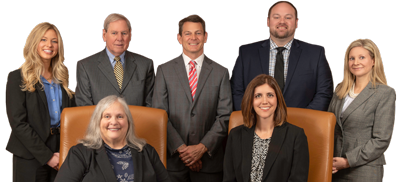
Lane change accidents are a common type of car crashes that occur when a vehicle moves from one lane to another and collides with another vehicle. This type of car accident can happen in various scenarios, such as a driver merging onto a highway or overtaking another vehicle. Understanding who is responsible in a lane-changing accident is crucial for determining liability and seeking compensation.
How Do You Determine Fault in a Lane Change Accident?
Right of Way and Traffic Laws
Determining fault in an accident often revolves around the concept of right of way. According to applicable laws, the driver changing lanes must yield to vehicles already occupying the lane they wish to enter to avoid a car accident. This means using signals to indicate their intention and ensuring that the next lane is clear before changing lanes.
Failure to follow these rules can lead to being deemed the at-fault driver and legally responsible for the lane-changing crash.
Role of Negligence in Lane Change Accident Fault Determination
Negligent acts play a significant role in determining responsibility in lane-changing crashes. Negligence occurs when a driver fails to exercise reasonable care and a car accident occurs. For example, if a driver changes lanes without checking their mirrors or using their turn signals, they may be considered negligent.
Proving negligence involves demonstrating that the merging driver breached their duty of care and caused the car accident when they changed lanes improperly.
Common Causes of Lane Changing Accidents
Driver Distraction and Blind Spots: Distracted driving and failure to check blind spots are leading causes of lane-changing collisions and sideswipe accidents. Drivers may become distracted, leading them to make unsafe lane changes. Staying focused on the road and checking blind spots by physically turning their heads before changing lanes is essential for avoiding this type of car accident.
Driver Changing Lanes While Speeding: Failing to follow speed limits and aggressive driving behaviors, such as tailgating and rapid lane changes, increase the risk of accidents. These actions reduce the time available to react to other drivers and make it more difficult to change lanes safely.
Weather Conditions and Vehicle Defects: Adverse weather conditions and vehicle defects, such as malfunctioning mirrors or signals, can also contribute to lane-changing crashes. Drivers must adjust their driving to accommodate these conditions, and regular car maintenance is crucial to ensure all safety features are functioning correctly.
Legal Considerations in Lane-Changing Collisions
 Gathering evidence is vital after a lane-changing crash. This includes taking photos of the accident scene, collecting eyewitness statements, and obtaining police reports. Dashcam footage can also provide valuable evidence of the events leading up to the accident.
Gathering evidence is vital after a lane-changing crash. This includes taking photos of the accident scene, collecting eyewitness statements, and obtaining police reports. Dashcam footage can also provide valuable evidence of the events leading up to the accident.
Insurance companies play a significant role in determining responsibility in lane-changing collisions. They review evidence, assess damage, and may assign responsibility based on their findings. It is essential to provide accurate and comprehensive information to your insurance to support your claim and seek compensation.
Traffic citations issued at the scene can influence fault determination. For instance, if a driver is cited for an illegal lane change or failure to use a turn signal, it can serve as evidence of their negligence.
Steps to Take After a Lane Change Crash
Ensuring Safety and Documenting the Auto Accident: The first priority after an accident is the safety of all drivers involved. Move vehicles to a safe location if possible and check for injuries. Document the accident by taking photos of the vehicles involved, the surrounding area, and any visible injuries.
Reporting the Accident and Seeking Medical Attention: Report the accident to the police and your insurance company as soon as possible. Provide a detailed account of the incident and submit any evidence you have. Even if you do not feel injured immediately, seek medical attention, as some injuries may not be apparent until later, and having medical records is essential for any future claims.
Preventing Lane Change Car Accidents
 Proper Use of Mirrors, Signals, and Safe Following Distances: Using mirrors and signals and maintaining safe following distances correctly when changing lanes can help prevent accidents. Always check your mirrors and blind spots before changing lanes and use your turn signal to indicate your intention to change lanes to other drivers. Keeping a safe distance from the car in front of you provides more time to react to sudden lane changes or stops.
Proper Use of Mirrors, Signals, and Safe Following Distances: Using mirrors and signals and maintaining safe following distances correctly when changing lanes can help prevent accidents. Always check your mirrors and blind spots before changing lanes and use your turn signal to indicate your intention to change lanes to other drivers. Keeping a safe distance from the car in front of you provides more time to react to sudden lane changes or stops.
Awareness of Surroundings and Defensive Driving Techniques: Staying aware of your surroundings and anticipating the actions of other drivers can help you avoid lane change accidents with a merging driver. Practice defensive driving techniques to remain vigilant and prepared for unexpected maneuvers. This includes being proactive about keeping drivers safe, anticipating the actions of other drivers, and being prepared to react to potential hazards when changing lanes.
Frequently Asked Questions About Lane Change Accidents
Who Is Usually at Fault in a Lane Change Accident?
Typically, one driver changing lanes is at fault in a lane-changing collision, especially if they failed to check their mirrors or use their turn signals.
Can Both Drivers Be at Fault for a Driver Changing Lanes?
In some cases, both drivers can share responsibility if both were negligent while changing lanes. This is known as shared fault or comparative negligence and can affect the distribution of liability.
How Can I Prove the Other Driver Was the At-Fault Party?
When proving the fault of the other driver, gather evidence such as photos, eyewitness statements, and police reports. Demonstrating the negligence of the other driver will help you establish fault.
What Should I Do if I’m Partially at Fault?
If you are partially at fault, you may still be able to recover compensation depending on the extent of your fault. Many states follow comparative negligence laws, which allow for compensation even if you share some fault.
Will My Insurance Rates Go Up After an Accident?
Your insurance rates may increase after an accident, especially if you are found at fault. It is important to discuss your options with your insurance provider.
Contact a Rhoads & Rhoads Personal Injury Attorney for Your Car Accident
Understanding lane change accident fault is essential for protecting your rights and seeking fair compensation. By following laws of the road, staying vigilant, and practicing safe driving techniques, you can reduce the risk of these accidents.
If you are involved in an accident, gathering evidence and seeking legal advice from Rhoads & Rhoads can help you navigate the claims process and get you on the road to recovering compensation you deserve. We’re here to ease your burden, guiding you with care and competence through each step of your legal journey.
For more information or to discuss your case, contact a personal injury attorney for a free initial consultation and case review after your crash. We fight for you, not just in court, but in every interaction, championing your rights against large companies.
Our compassionate attorneys can help you understand your legal options, deal with insurance companies, and work to recover maximum compensation for your injuries and damages. Don’t let the complexities of the legal system deter you from seeking the justice you deserve after an accident.
Call us today at 888-709-9329 to schedule your free case review. Leveraging 50 years of legal experience in Western Kentucky, we provide knowledgeable counsel. You pay nothing unless we win your case—ensuring access to justice for all.


